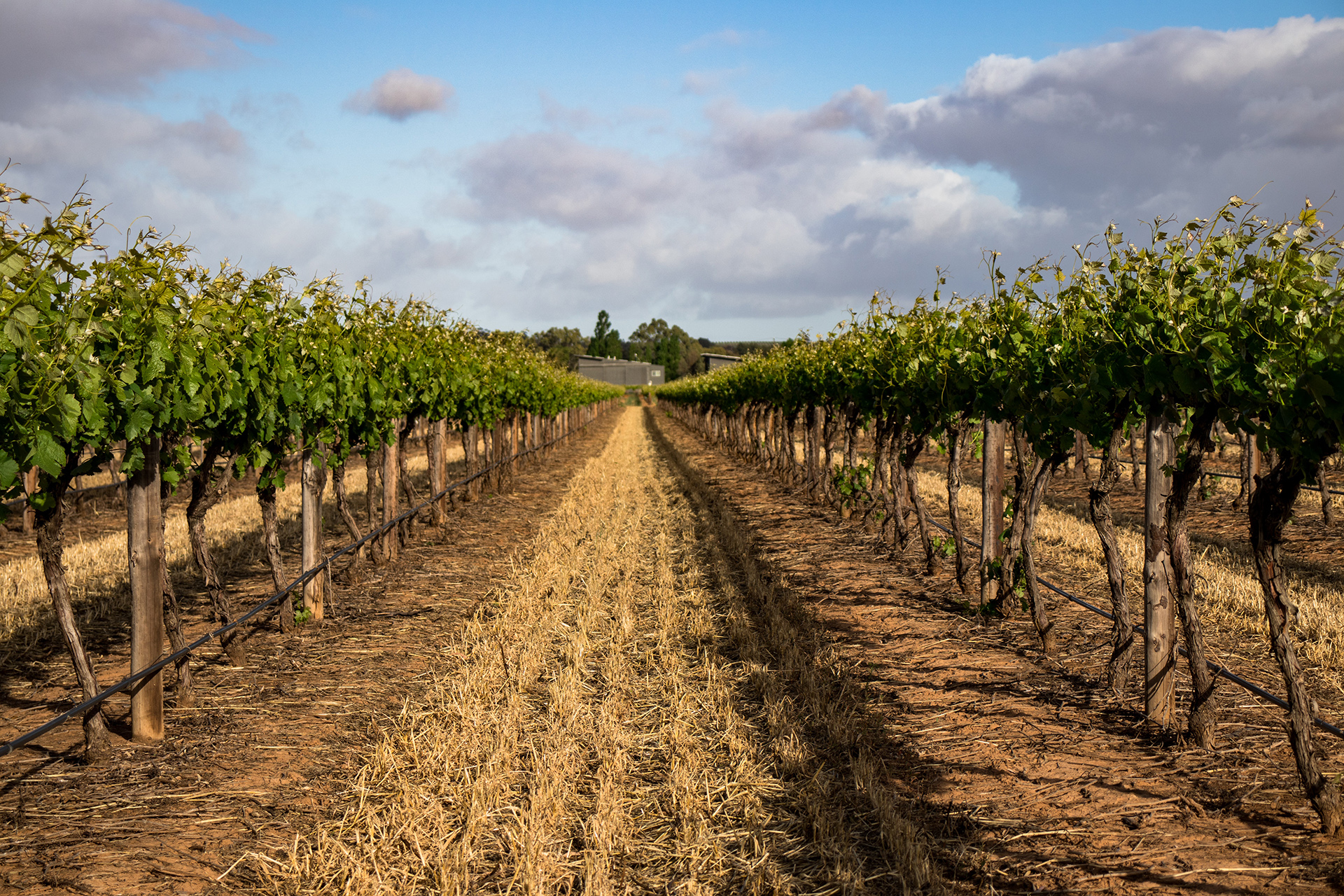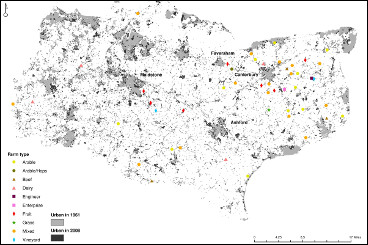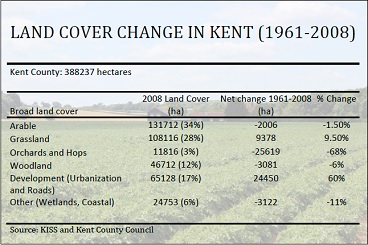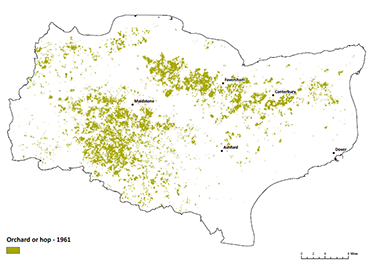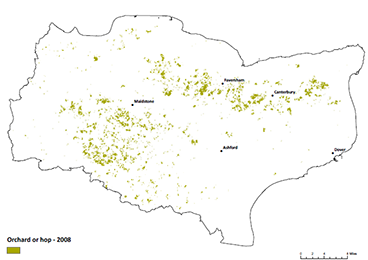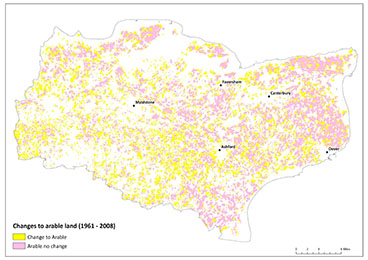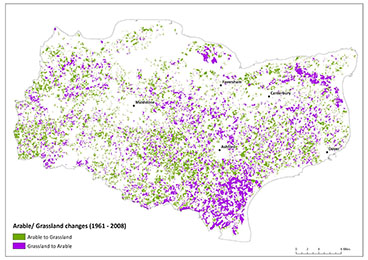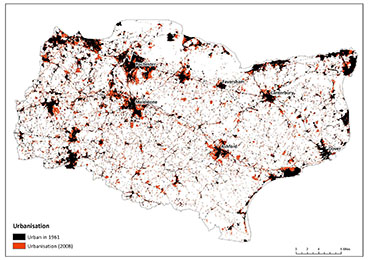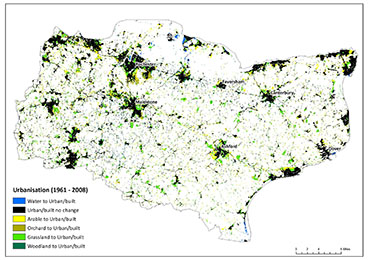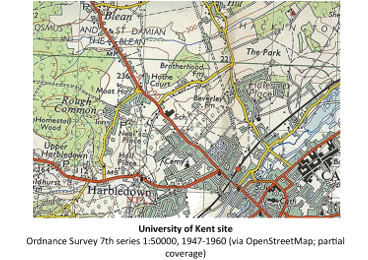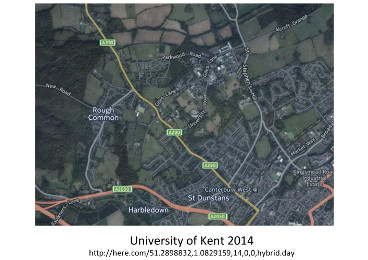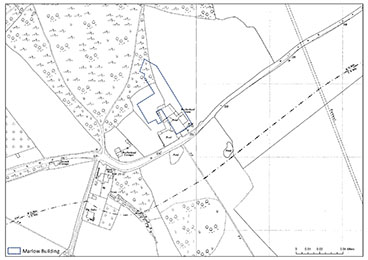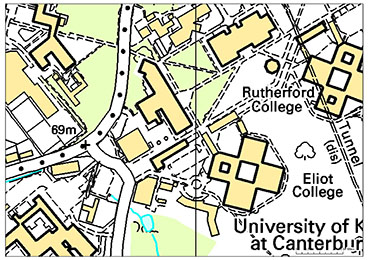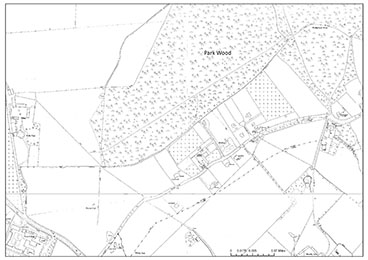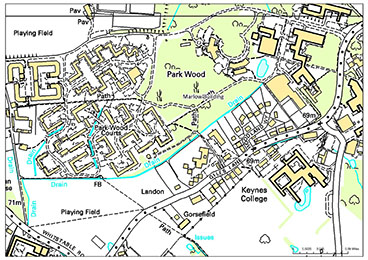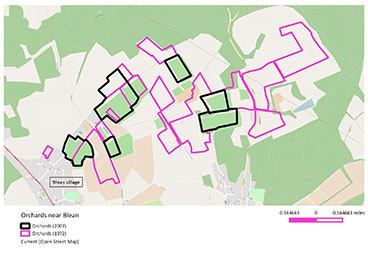This section of the archive contains maps and other spatial information collected as part of the 50 Farmers’ Tales project. We were interested in a county-wide perspective on change in Kent over the last 50 years, to give some context to the 50 interviews we conducted with farmers on their particular experiences with changes on their farms.
Here, you’ll find old maps of the area around the University of Kent at Canterbury, plus a series of maps showing changes in land use and land cover between 1961 and 2008, which is as close as we could get, in terms of available data, to our study period from 1965-2015. This GIS analysis was conducted by Dr Dimitrios Bormpoudakis and Dr Joseph Tzanopoulos at the Kent Interdisciplinary Centre for Spatial Studies (KISS), with data provided by Kent County Council’s ARCH project (Assessing Regional Habitat Change).
